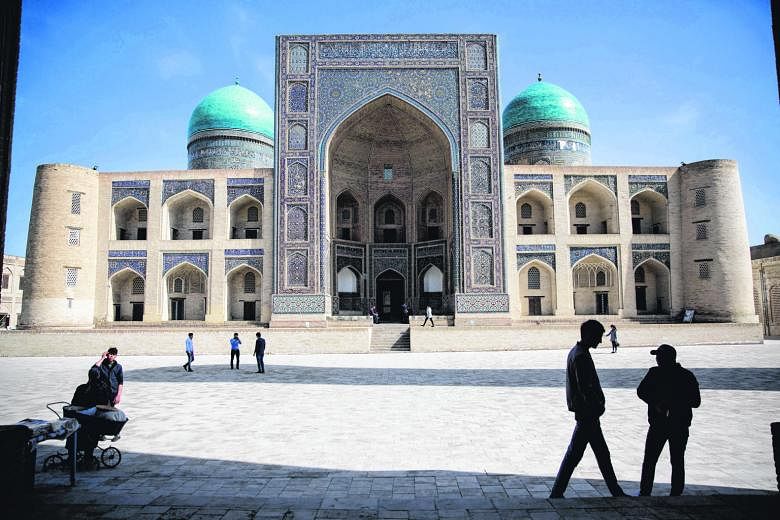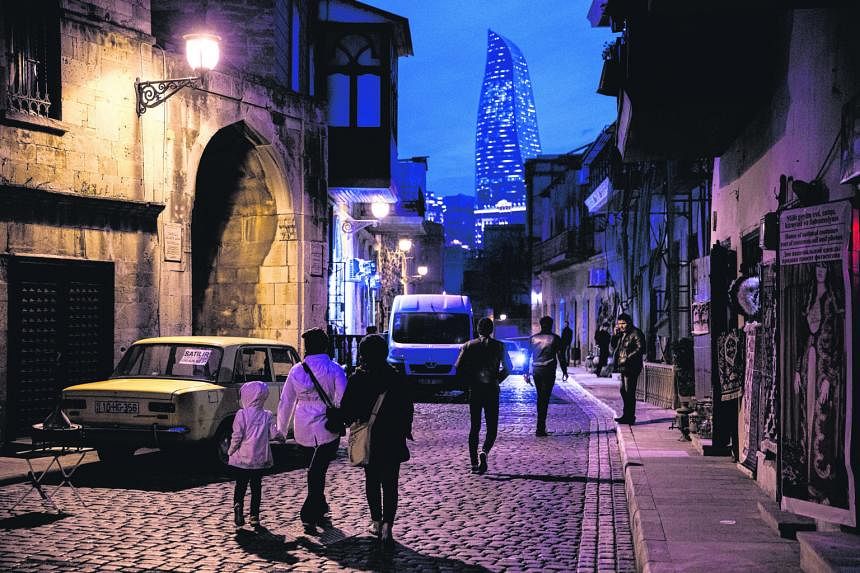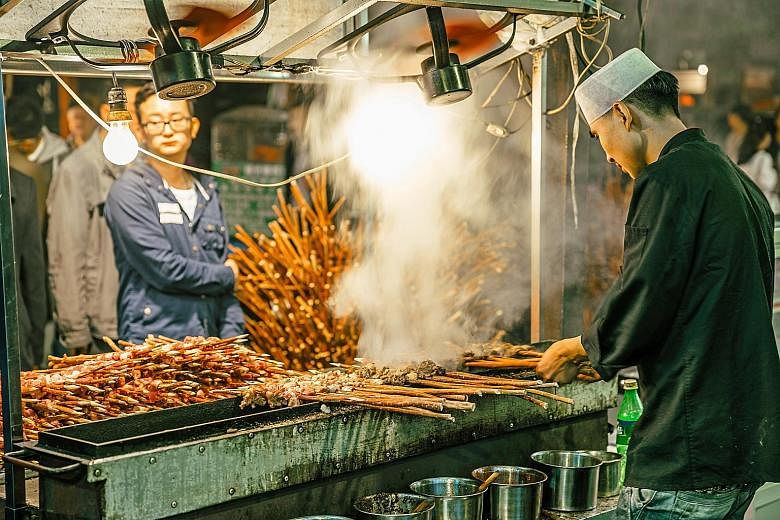BEIJING • The old Silk Road is set to spin off new travel options, thanks to more than a trillion dollars of prospective investment led by China's Belt and Road Initiative, linking countries between east Asia and Europe.
Here are some itineraries.
FOR FOOD LOVERS
Xi'an, China: The heart of the original Silk Road was indisputably the central Chinese city of Chang'an, or modern-day Xi'an. In the eighth century, it was the largest and most cosmopolitan city in the world.
A global trade hub with 12 million residents now, Xi'an is reclaiming its former glory as the eastern terminus of the Belt and Road link.
How much time you will need: Three to five days.
What to see and do: Most people know Xi'an for its terracotta army, but there is much more to the place.
Start at Tang West Market, which is said to have been the historic start of the old Silk Road. Today, it is a shopping bonanza, where you will find everything from faux antique daggers to jade-bejewelled brass pots.
Make a pit stop at the Tang West Market Museum, which has one of the world's biggest displays of relics from the Silk Road.
Move on to the Muslim quarter, where traditional shops and street-food stalls line the narrow alleys.
Be adventurous and try spicy camel skewers, wholesome biang biang noodles and persimmon doughnuts.
FOR ARCHITECTURE BUFFS
Uzbekistan: Its ancient cities still stand remarkably intact, along with their ornate, mosaic-laden monuments. This place brims with a fascinating sense of history, layers of architectural and religious heritage, and a global melange of cultural traditions forged over millennia.
How much time you will need: Seven to 10 days.
What to see and do: Though you will fly in via Tashkent, it is best to connect straight through to Samar-kand, a 2,500-year-old city that is 320km to the south of the capital.
There, you can see where Genghis Khan sacked the city of Afrosiab in the 13th century, watch daily life unfold against a backdrop of mud-brick Uzbek houses and visit sites such as the 15th-century Registan Mosque.
Next stop is Bukhara, a city with glistening turquoise domes, ornate mosques, ancient forts and layer upon layer of living history.
It is one of the region's best preserved mediaeval cities, with monuments such as the Indian-influenced, four-minaret Char Minar.
FOR ADVENTURE SEEKERS
Azerbaijan: Many Silk Road destinations claim to be "the place where the East meets the West", but Azerbaijan has the best geographical claim to that title.
It remains a place where minds from far-off lands converge, though they are more likely drilling for oil or shopping at fashionable boutiques than trading wares.
The capital, Baku, is like Dubai - ripe with old-world charm and modern-day glitz. But it is the day trips just outside the city that you will remember most.
How much time you will need: Three to five days.
What to see and do: Baku's architecture details the capital's history. The streets of the Islamic old city, a Unesco World Heritage Site, are packed with stone buildings that date back to the 12th century.
The outer city was built by imperial Russians with baroque, Gothic and post-modern buildings lining massive boulevards. Downtown are skyscrapers from a futuristic era.
Then, get out of town. From the new port of Alat, 64km south, you can take a ferry ride across the Caspian Sea to Kazakhstan or Turkmenbashi in Turkmenistan.
FOR EUROPHILES
Northern Greece: History buffs who come to Greece think first of Zeus, Homer and the Parthenon.
But another claim to fame is that it was the trail-head for one of the first iterations of the Silk Road, dating to Alexander the Great's conquests in 4BC. Glimmers of that legacy remain in the north, in little-visited destinations such as Vergina and Soufli.
The new Belt and Road link is emerging as an important narrative here, particularly in Piraeus, a bustling port city since ancient times. The Chinese bought the port in 2016 and built it up as one of Europe's busiest marine hubs.
How much time you will need: One week.
What to see and do: Vergina, which has been inhabited since 3BC, has historic sites that are outstanding, even by Greek standards.
It was the first capital of ancient Macedonia, with a fascinating acropolis, theatre and palace.
East is Thessaloniki, a thriving urban centre that served as an ancient hub for silk and spices.
See how that pervades Thessaloniki's contemporary culture on a stroll through Modiano, the city's predominant foodie thoroughfare.
Sampling its souvlaki, gyros, cheese and meat-stuffed bougatsa pastries, feta-stuffed squid and smoked eggplant will prove why this place is considered the "gourmet capital of Greece".
Culminate in the eastern-most city of Soufli, Greece's capital of viniculture and silk production. Three museums here are dedicated to the Silk Road, affirming the legacy of the trade routes.
WASHINGTON POST



